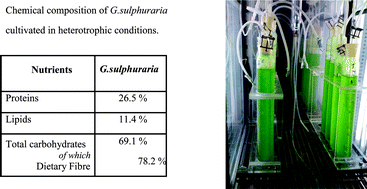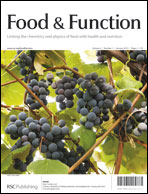Microalgae as human food: chemical and nutritional characteristics of the thermo-acidophilic microalga Galdieria sulphuraria
Abstract
The use of microalgae as a food source is still poorly developed because of the technical difficulties related to their cultivation and the limited knowledge about their chemical composition and nutritional value. The unicellular red microalga Galdieria sulphuraria has a very high daily productivity and its cultivation under acidic conditions avoided any bacterial contamination. G. sulphuraria can be cultured under autotrophic and heterotrophic conditions: in this study a screening of 43 strains showed that in the latter case a duplication of biomass production was obtained. The proximate composition (protein, carbohydrates, fiber and lipids), the micronutrient content (carotenoids, phycobiliproteins, chlorophylls and vitamins) together with the antioxidant activity of the biomass produced by a selected strain of G. sulphuraria under both cultivation conditions were determined. Results showed that the material is rich in proteins (26–32%) and polysaccharides (63–69%) and poor in lipids. Under heterotrophic cultivation conditions, the lipid moiety mainly contained monounsaturated fatty acids. Among micronutrients, some B group vitamins are present, beta-carotene is the main carotenoid and phycobiliproteins are present under both cultivating conditions. G. sulphuraria proteins are strictly associated with polysaccharide components and therefore not digestible. In the second part of the work, an extraction protocol using Viscozyme L, a commercial enzymatic preparation containing a mixture of polysaccharidases, was developed which made G. sulphuraria proteins a good substrate for human gastrointestinal enzymes. All in all, the data suggested that G. sulphuraria biomass has a potential use as food ingredients both for protein-rich or insoluble dietary fibre-rich applications. The low concentration of lipids and the absence of green color make this microalgae source particularly useful for the addition to many food preparations.


 Please wait while we load your content...
Please wait while we load your content...